June 5, 2017
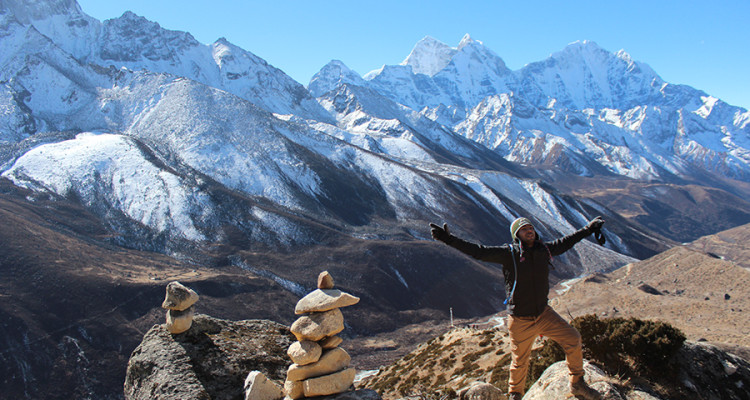
Here is a list of the top 20 most searched topics related to Nepal travel information:
Trekking in Nepal is a popular activity for adventurers and outdoor enthusiasts. With its stunning landscapes, rich culture, and welcoming people, Nepal is a great destination for trekking.
Some of the most popular trekking routes in Nepal include the Everest Base Camp Trek, the Annapurna Circuit Trek, and the Langtang Valley Trek. Each of these treks offers unique experiences, from stunning mountain vistas to encounters with local communities and their traditions.
When trekking in Nepal, it is important to be prepared for a range of conditions, including high altitude and variable weather. It is also important to respect the local culture and environment by following responsible trekking practices, such as packing out all waste and minimizing the use of plastic.
Trekking in Nepal can be done independently or with a guide or porter. Many trekkers opt to hire local guides and porters to help navigate the trails and carry gear. This not only supports the local economy but can also enhance the trekking experience by providing opportunities for cultural exchange and learning.
Overall, trekking in Nepal is a challenging but rewarding experience that offers stunning natural beauty and opportunities for cultural immersion.
Foreign nationals require a visa to enter Nepal. The type of visa required depends on the purpose and length of the stay. Here are the most common visa types and their requirements:
Tourist Visa: This is the most common type of visa for visitors to Nepal. It is valid for 15, 30, or 90 days and can be obtained on arrival at the airport or at any land border crossing point. To obtain a tourist visa, you will need:
It is important to note that visa requirements and fees may change from time to time, so it is advisable to check with the Nepalese embassy or consulate in your country before you travel to Nepal. Additionally, some nationalities may be eligible for visa-free entry, so it’s worth checking if that applies to you.
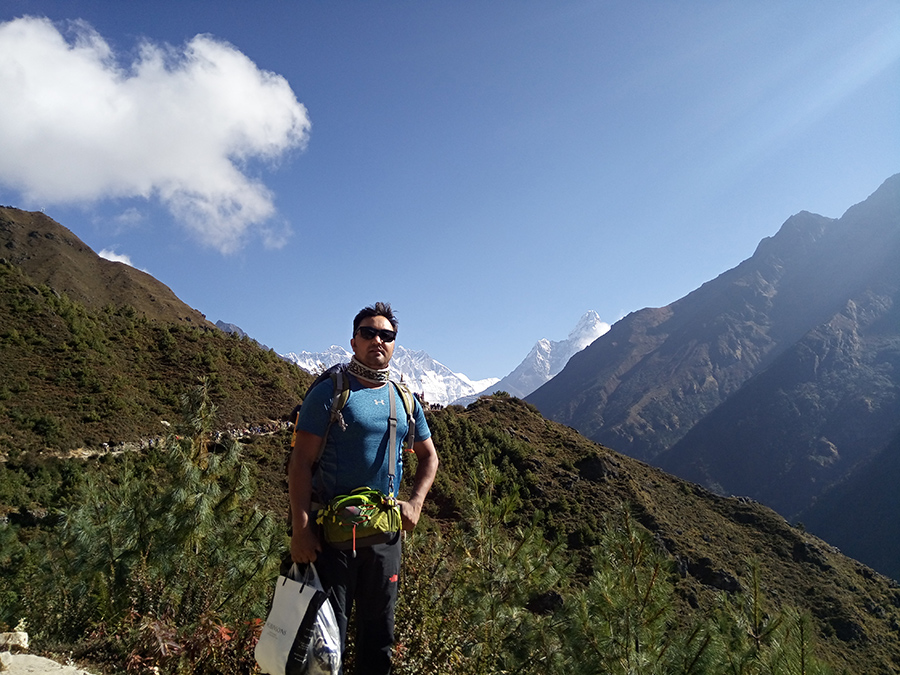
Malaria is a serious public health problem in Nepal, especially in the southern lowland Terai region bordering India. The majority of malaria cases in Nepal are caused by Plasmodium vivax, which is less deadly than Plasmodium falciparum but can still cause severe illness and death if left untreated.
According to the World Health Organization (WHO), there were an estimated 935,000 cases of malaria in Nepal in 2019, with 49% of these cases occurring in the Province 2 region. However, the actual number of cases is likely much higher, as many cases go undiagnosed and unreported.
The Nepalese government has implemented various malaria control programs in an effort to reduce the burden of the disease. These include distributing insecticide-treated bed nets, indoor residual spraying, and providing prompt diagnosis and treatment of malaria cases. The government has also strengthened its surveillance and response systems to detect and respond to outbreaks.
Travelers to Nepal are advised to take precautions to prevent malaria, such as using insect repellent, wearing long-sleeved clothing, and sleeping under an insecticide-treated bed net. It is also recommended to consult with a healthcare provider before traveling to Nepal to discuss antimalarial medication options.
Overall, malaria remains a significant public health concern in Nepal, especially in the southern Terai region. Continued efforts are needed to strengthen malaria control programs and reduce the burden of the disease.
Nepal is a country of breathtaking natural beauty, ancient temples, and rich cultural heritage. Here are some of the best places to visit in Nepal:
Kathmandu: The capital city of Nepal, Kathmandu, is a hub of cultural and historical significance. It is home to many ancient temples, including Swayambhunath Stupa, Boudhanath Stupa, Pashupatinath Temple, and Kathmandu Durbar Square.
Pokhara: Pokhara is a scenic city that is nestled in the Himalayas. It is the gateway to many popular trekking routes, including the Annapurna Circuit and the Poon Hill trek. The city also has many beautiful lakes, including Phewa Lake.
Chitwan National Park: Chitwan National Park is a UNESCO World Heritage Site that is home to many rare and endangered species of animals, including tigers, rhinoceroses, and elephants. Visitors can take a jeep safari or an elephant ride to explore the park.
Everest Base Camp: Mount Everest is the highest mountain in the world, and the trek to the Everest Base Camp is one of the most popular trekking routes in Nepal. The trek takes visitors through scenic villages, across suspension bridges, and past breathtaking mountain views.
Lumbini: Lumbini is the birthplace of Lord Buddha and is one of the most important pilgrimage sites for Buddhists around the world. The site has many ancient temples and monasteries, and visitors can explore the peaceful surroundings.
Bhaktapur: Bhaktapur is a well-preserved medieval city that is famous for its ancient temples, palaces, and brick-paved streets. It is a UNESCO World Heritage Site and is located just outside of Kathmandu.
Langtang National Park: Langtang National Park is a lesser-known but stunningly beautiful park that is home to many rare species of animals, including the red panda. Visitors can take a trek through the park to experience its breathtaking scenery.
Annapurna Sanctuary: The Annapurna Sanctuary(Annapurna base camp)is a stunning natural amphitheater that is surrounded by towering mountains. Visitors can take a trek to the sanctuary to experience its breathtaking views and unique cultural experiences.
Nepal is a country that is full of natural beauty and cultural significance, and these are just a few of the many places that visitors can explore.
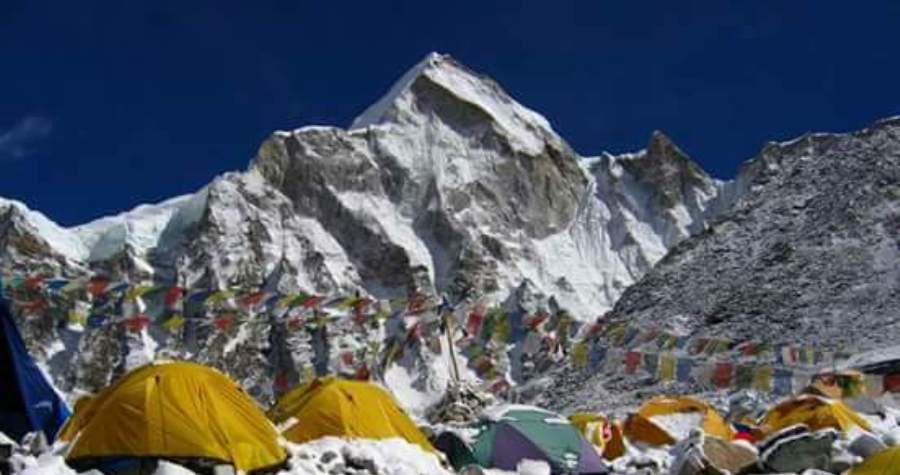
As of my knowledge cutoff date of September 2021, Nepal had travel restrictions in place due to the COVID-19 pandemic. The situation may have changed since then, so it is important to check the latest information before planning a trip to Nepal.
At the time, Nepal required all travelers to present a negative PCR test result taken within 72 hours of departure. Travelers were also required to have travel insurance that covers COVID-19 and to complete a health declaration form upon arrival.
Some countries were on a list of restricted countries, and travelers from those countries were not permitted to enter Nepal. Additionally, all foreign nationals were required to spend 10 days in hotel quarantine upon arrival in Nepal, at their own expense.
Visitors to Nepal were also required to follow local health guidelines, such as wearing masks and maintaining physical distancing.
It is important to note that the situation is rapidly evolving, and the restrictions and requirements may change at any time. Travelers should check the latest information from the Nepalese government and their airline before making travel arrangements.
There are several ways to get around in Nepal, depending on your destination and budget:
Domestic Flights: Nepal has several domestic airlines that offer flights to major cities and towns. This is a quick and convenient way to travel long distances, but it can be expensive.
Buses: Buses are a common mode of transportation in Nepal, and there are many options available, from local buses to long-distance buses. The quality of the buses can vary greatly, and the roads can be challenging, but this is a budget-friendly option.
Taxis and Private Cars: Taxis and private cars are available in major cities and towns, and they are a convenient option for short distances. Negotiate the fare before getting in, and make sure to choose a reputable driver.
Motorbikes and Scooters: Motorbikes and scooters are popular options for travelers who want to explore on their own. They can be rented in major cities and towns, but be sure to wear a helmet and drive carefully.
Trekking: Trekking is a popular activity in Nepal, and it is a great way to see the countryside and remote areas. There are many trekking routes available, ranging from easy to challenging.
It is important to note that the roads and transportation infrastructure in Nepal can be challenging, and travelers should take precautions and be prepared for unexpected delays or changes. Always research the latest safety and travel information before embarking on any journey in Nepal.
Nepal is a generally safe country for travelers, but like any country, there are some risks that travelers should be aware of. Here are some tips for staying safe in Nepal:
Be aware of the political situation: Nepal has experienced political instability in the past, and there may be occasional protests and demonstrations. Avoid large crowds and follow local news to stay informed about the situation.
Watch out for petty crime: Petty crime, such as pickpocketing and theft, can occur in crowded areas, so keep an eye on your belongings and avoid carrying valuables with you.
Stay healthy: Nepal is a developing country, and the quality of food, water, and sanitation can be a concern. Drink bottled water, avoid street food, and practice good hygiene to reduce the risk of getting sick.
Be prepared for the weather: Nepal has a varied climate, and weather conditions can be unpredictable. Make sure to bring appropriate clothing and gear for the weather conditions at your destination.
Respect local customs: Nepal is a predominantly Hindu country, and visitors should respect local customs and traditions. Dress modestly when visiting temples and other religious sites, and remove your shoes before entering.
Trekking safety: Trekking is a popular activity in Nepal, but it can be dangerous if you are not prepared. Always hire a guide or porter, make sure you have the proper equipment and clothing, and check the weather conditions before embarking on any trek.
Overall, Nepal is a safe country for travelers, but it is important to take precautions and be aware of your surroundings. Always research the latest safety information and follow local customs and laws to have a safe and enjoyable trip.
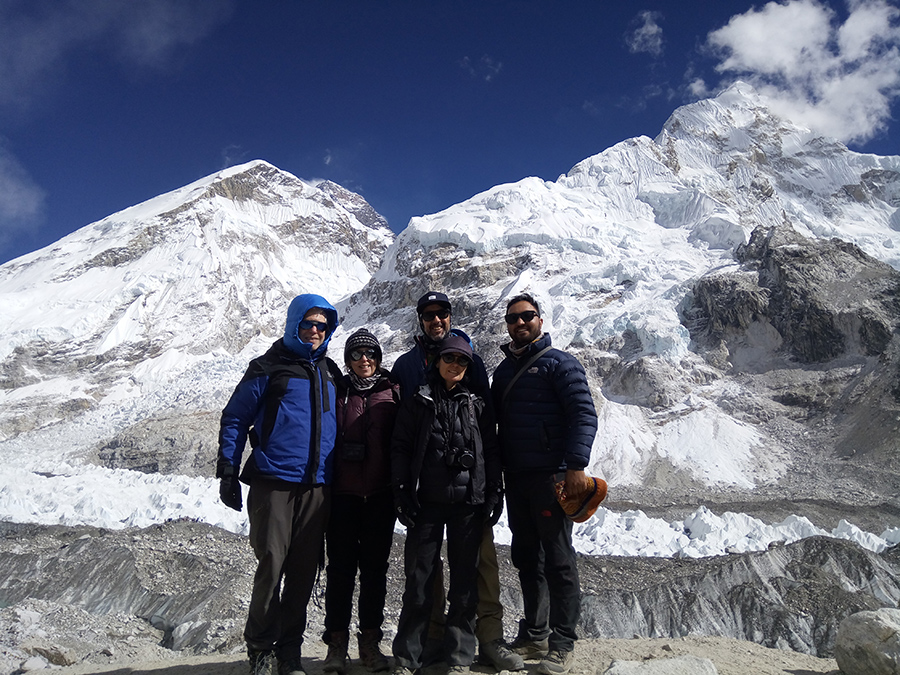
Nepal has a diverse climate due to its geography, ranging from the hot and humid Terai region in the south to the cold and arid Himalayan region in the north. The country has five distinct seasons: summer, monsoon, autumn, winter, and spring.
Summer (March to May):
During this time, the temperature in Nepal can range from 25°C to 35°C in the Terai region. The hilly regions are cooler, with temperatures ranging from 15°C to 25°C. This is a popular time for trekking in the higher regions of Nepal, as the weather is warm and clear.
Monsoon (June to August):
The monsoon season brings heavy rainfall to most parts of Nepal. This is the time when the country receives the majority of its annual rainfall, which can cause landslides and flooding. The temperature during this time is warm, with temperatures ranging from 20°C to 30°C.
Autumn (September to November):
This is the peak tourist season in Nepal, as the weather is cool and dry, with clear skies. The temperature during this time ranges from 10°C to 25°C in the hilly regions, and the temperature in the Terai region can be as high as 30°C.
Winter (December to February):
The temperature during winter in Nepal ranges from 5°C to 20°C in the hilly regions, and it can drop below freezing in the higher regions of the Himalayas. The Terai region is mild, with temperatures ranging from 10°C to 25°C.
Spring (March to May):
Spring is a great time to visit Nepal, as the weather is warm and clear. The temperature during this time ranges from 15°C to 30°C in the hilly regions, and it can be as high as 35°C in the Terai region.
Overall, Nepal has a varied climate that is influenced by its geography, altitude, and monsoon patterns. It’s important to be prepared for changing weather conditions when visiting Nepal, especially during the monsoon season.
Nepal has a wide variety of accommodations to suit different budgets and preferences. Here are some options for where to stay in Nepal:
Hotels: There are many hotels in Nepal, ranging from budget to luxury. Most hotels are located in major cities and tourist areas, such as Kathmandu, Pokhara, and Chitwan. Many hotels offer amenities such as restaurants, spas, and swimming pools.
Guesthouses: Guesthouses are a popular option for budget travelers. They are typically small, family-run establishments that offer basic accommodations at a lower cost than hotels. Guesthouses are common in trekking areas and remote regions.
Homestays: Homestays offer a unique opportunity to stay with a local family and experience Nepali culture firsthand. Many homestays are located in rural areas and offer a more authentic and immersive experience.
Resorts: Nepal has a few resorts that offer luxury accommodations in beautiful natural settings. These resorts are typically located in the mountains or near national parks.
Tea houses: Tea houses are a type of accommodation commonly found along trekking routes. They offer basic accommodations, such as a bed and shared bathroom facilities. They are a popular option for trekkers who want to stay in the mountains overnight.
Overall, where to stay in Nepal will depend on your budget, itinerary, and personal preferences. It’s important to research and book accommodations in advance, especially during peak tourist season.

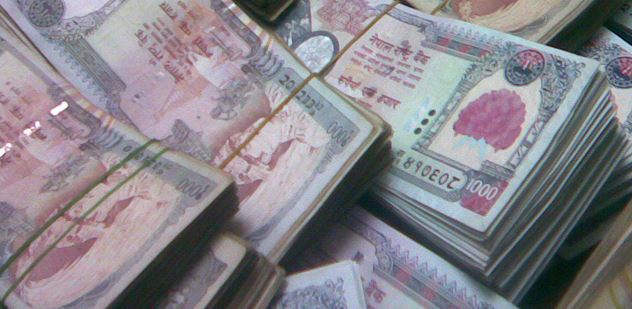
Nepali Currency
The official currency of Nepal is the Nepalese rupee (NPR). Here are some important things to know about money and currency in Nepal:
Exchange rates: The exchange rate for the Nepalese rupee fluctuates regularly. It’s important to check the current exchange rate before exchanging money.
ATMs: ATMs are widely available in major cities and tourist areas in Nepal. They accept most major credit and debit cards, but it’s a good idea to check with your bank before traveling to ensure your card will work in Nepal.
Currency exchange: Currency exchange services are available at banks and exchange bureaus in major cities and tourist areas. It’s important to exchange money at authorized locations to avoid counterfeit currency.
Cash: Cash is widely accepted in Nepal, especially in rural areas. It’s a good idea to carry small denominations of Nepalese rupees for purchases at local shops and markets.
Tips: Tipping is not mandatory in Nepal, but it’s appreciated in the service industry. A 10% tip is considered generous.
USD: US dollars are also widely accepted in Nepal, especially in tourist areas. However, it’s important to note that USD must be in good condition and not torn or damaged, otherwise they may not be accepted.
Overall, it’s a good idea to have a mix of cash and cards when traveling in Nepal. It’s also important to keep money and valuables secure to avoid theft.
Nepal is a country with a rich cultural heritage, shaped by its diverse ethnic and religious communities. Here are some important things to know about Nepal’s culture and people:
Religion: Nepal is a predominantly Hindu country, with over 80% of the population practicing Hinduism. Buddhism is also widely practiced, especially in the northern regions of the country.
Ethnic groups: Nepal has over 125 different ethnic groups, each with its own unique traditions and customs. The largest ethnic group is the Chhetri, followed by the Brahmin, Magar, Tharu, and Tamang.
Festivals: Nepal has a rich calendar of festivals, many of which are religious in nature. Some of the most important festivals include Dashain, Tihar, Holi, and Teej.
Food: Nepali cuisine is diverse and flavorful, with influences from Indian, Tibetan, and Chinese cuisine. Some popular dishes include momos (dumplings), dal bhat (rice and lentils), and chow mein (noodle stir-fry).
Hospitality: Nepali people are known for their warmth and hospitality towards visitors. Guests are often treated with great respect and offered food and drink.
Art and crafts: Nepal has a rich tradition of art and crafts, including pottery, weaving, and wood carving. Some of the most famous crafts include thangka painting (a traditional form of Buddhist art) and pashmina shawls (made from the wool of Himalayan mountain goats).
Overall, Nepal’s culture and people are diverse and vibrant, with a deep appreciation for tradition and hospitality. Visitors to Nepal are often struck by the warmth and friendliness of the Nepali people.
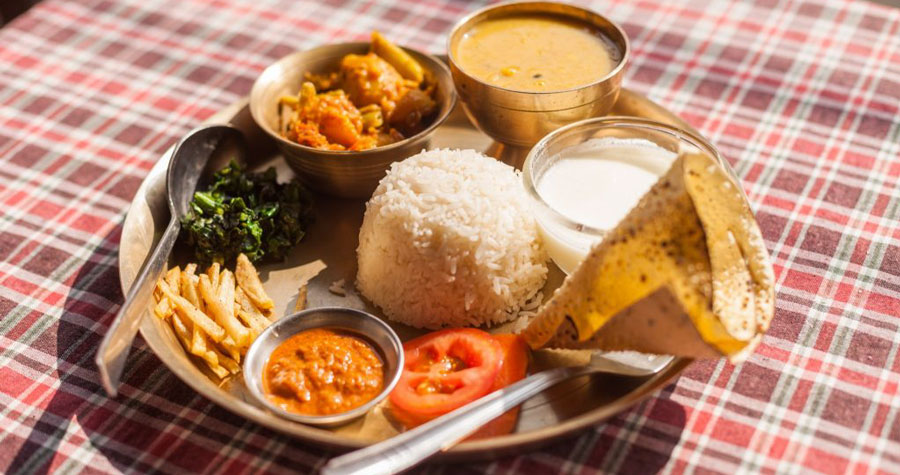
Nepal has a diverse and flavorful cuisine that is influenced by its neighboring countries, including India and Tibet. Here are some popular dishes and ingredients in Nepali cuisine:
Dal Bhat: Dal Bhat is a staple dish in Nepali cuisine, consisting of boiled rice and lentil soup (dal). It is often served with vegetables, pickles, and chutneys.
Momos: Momos are a popular Nepali snack, consisting of steamed or fried dumplings filled with meat, vegetables, or cheese. They are often served with a spicy dipping sauce.
Thukpa: Thukpa is a Tibetan noodle soup that is popular in Nepal, especially in the mountainous regions. It typically contains vegetables, meat, and noodles in a flavorful broth.
Newari cuisine: Newari cuisine is a specialty of the Kathmandu Valley and is known for its unique dishes and flavors. Some popular Newari dishes include choila (spicy grilled meat), bara (a type of lentil pancake), and yomari (a sweet dumpling filled with molasses).
Spices: Nepali cuisine is known for its use of spices, including cumin, coriander, turmeric, and chili. These spices are used to create flavorful curries and sauces.
Tea: Tea is a popular beverage in Nepal, especially in the mountainous regions. Nepali tea is often served with milk and sugar and is known for its rich flavor.
Overall, Nepali cuisine is diverse and flavorful, with a mix of influences from neighboring countries. Visitors to Nepal can enjoy a variety of dishes and flavors, from hearty dal Bhat to spicy momos and flavorful curries.
Access to healthcare in Nepal remains a challenge for many people, particularly those living in rural areas. Nepal is a low-income country with limited resources, and its healthcare system faces a range of challenges, including inadequate funding, limited infrastructure, and a shortage of trained healthcare professionals.
According to the World Health Organization (WHO), Nepal has a doctor-to-population ratio of approximately 0.7 per 1,000 people, which is well below the WHO’s recommended minimum of 2.3 per 1,000. This shortage of doctors and other healthcare professionals is particularly acute in rural areas, where many people lack access to basic healthcare services.
In addition to a shortage of healthcare professionals, Nepal’s healthcare system also suffers from a lack of infrastructure and equipment. Many healthcare facilities lack basic supplies and equipment, such as medicines, diagnostic tools, and clean water. This can make it difficult for healthcare providers to diagnose and treat illnesses effectively.
Despite these challenges, there have been some efforts to improve access to healthcare in Nepal in recent years. The government has launched several initiatives to expand access to healthcare services, including the National Health Insurance Program, which provides health insurance coverage to low-income families.
Non-governmental organizations (NGOs) have also played a role in improving access to healthcare in Nepal. For example, organizations such as the Nepal Red Cross Society and Save the Children have launched healthcare initiatives focused on maternal and child health, and have worked to provide healthcare services to rural communities.
Overall, while there have been some improvements in access to healthcare in Nepal in recent years, there is still a long way to go to ensure that all Nepalis have access to high-quality healthcare services.
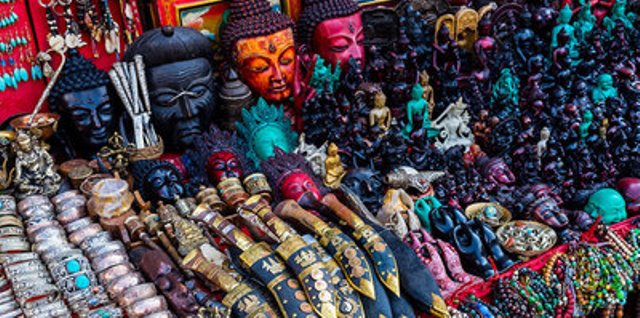
Nepal is a wonderful destination for shopping and finding unique souvenirs to take back home. Here are some popular items to look out for:
Handmade Crafts: Nepal is famous for its traditional handicrafts made by skilled artisans. You can find beautifully crafted woodcarvings, pottery, jewelry, and embroidered textiles.
Thangka Paintings: Thangka paintings are religious artworks made on cotton or silk. They usually depict Buddhist deities or scenes and are popular souvenirs.
Nepali Tea: Nepal is known for its high-quality tea, grown in the foothills of the Himalayas. You can find a variety of teas including black, green, and white tea.
Pashmina Shawls: Pashmina is a fine cashmere wool that comes from the Himalayan region. Nepali shawls made of pashmina are soft, warm, and luxurious.
Prayer Flags: Colorful prayer flags are a common sight in Nepal. They are hung outside homes and temples to bring peace, prosperity, and good luck.
Singing Bowls: Singing bowls are a traditional Nepali musical instrument used for meditation and healing. They are made of copper and other metals and have a unique, soothing sound.
Nepali Masks: Nepali masks are hand-carved wooden masks that are used in traditional dances and festivals. They are also popular as wall decor.
Khukuri Knives: Khukuri is a traditional Nepali knife used for outdoor activities like hunting and trekking. It has a curved blade and a wooden handle.
Handmade Paper Products: Nepal is also known for its handmade paper products like notebooks, journals, and greeting cards. They are made from Lokta, a plant native to Nepal.
When shopping for souvenirs, be sure to bargain with the vendors as it is a common practice in Nepal. Happy shopping!

Nepal is a country with a diverse range of wildlife and natural beauty, including some of the world’s highest mountains and dense forests. Here are some of the must-visit destinations for nature lovers:
Chitwan National Park: Located in southern Nepal, Chitwan National Park is a UNESCO World Heritage Site and home to over 700 species of wildlife, including tigers, elephants, rhinos, and crocodiles.
Sagarmatha National Park: This park is located in the Everest region and is home to Mount Everest, the highest peak in the world. The park is also home to rare species like the snow leopard and Himalayan black bear.
Annapurna Conservation Area: This area is located in the western part of Nepal and is home to the Annapurna range of mountains. It is a popular trekking destination and is also home to rare species like the snow leopard and Himalayan musk deer.
Bardia National Park: Located in western Nepal, Bardia National Park is less visited than Chitwan but equally stunning. It is home to tigers, rhinos, elephants, and many other species of wildlife.
Langtang National Park: Langtang National Park is located in the central Himalayas and is known for its beautiful alpine scenery and diverse wildlife, including the red panda.
Phewa Lake: Phewa Lake is located in Pokhara and is a popular destination for boating and relaxing. The lake is surrounded by lush forests and has a stunning view of the Annapurna range.
Koshi Tappu Wildlife Reserve: Located in eastern Nepal, this reserve is home to over 500 species of birds, including the endangered Bengal florican and Sarus crane.
Nepal is a beautiful country with an abundance of natural wonders and wildlife. A visit to any of these destinations is sure to be a memorable experience for nature lovers.